In order to achieve optimum performance from articles injection molded out of RTP Company’s polylactic acid (PLA) based compounds, it is important to understand the proper injection molding conditions for these materials. PLA is a semi-crystalline polyester thermoplastic. Because polyesters are prone to hydrolysis, molders must pay particular attention to ensure material is dried prior to molding. Similar to other semi-crystalline polyesters, PLA can be molded into either the amorphous or crystalline morphology by changing molding conditions.
Drying
PLA is a hygroscopic thermoplastic that readily absorbs water from the atmosphere. The presence of even small amounts of moisture will hydrolyze PLA in the melt phase, reducing molecular weight and causing loss of properties. Prior to injection molding, we recommend that all PLA containing compounds be dried to a moisture content below 0.02% (200 ppm) using a desiccant dryer with the capability of delivering air with a dew point of -40°F (-40°C).
Most PLA compounds that RTP Company will be supplying will have amorphous pellets. These pellets can become sticky/tacky on the surface when heated above their glass transition temperature (Tg) of 130°F (55°C). It is important that drying temperatures do not exceed 130°F (55°C) or pellets will stick together and will not flow out of the dryer. Alloys with other polymers, ie PLA/PC hybrids, can be dried at higher temperatures.
Amorphous versus Crystalline Morphology
PLA is truly a semi-crystalline resin and by choice of whether or not to include a nucleating agent and choice of mold temperatures, one can dictate whether the final part will have amorphous or crystalline morphology.
If application will not be exposed to temperatures above 120°F (50°C), it is acceptable to mold PLA in the amorphous morphology. Amorphous morphology is achieved by not adding any nucleating agents and using a mold surface temperature that is controlled to a temperature of less than 75°F (24°C). Mold temperatures higher than this will cause parts to stick in the mold and be very soft and flexible upon ejection.
If application will be exposed to temperatures above the Tg of 130°F (55°C) regardless of pressure, or will be exposed to above 120°F (50°C) while under moderate pressure, ie 50 psi (340 KPa), RTP Company recommends that the PLA be in the crystalline state. Crystalline morphology is achieved by adding a nucleating agent (RTP Company offers either a standard cycle or a fast cycle nucleating agent). The mold surface temperature must be controlled at a temperature above 180°F (82°C), preferably about 220°F (105°C), and mold closed time must typically exceed 60 seconds for standard cycle or 40 seconds for fast cycle nucleating agent. This is typical for 1/8 inch (0.32 cm) thick parts. Thinner parts may be ejected at reduced cycle times depending on sprue & runner thickness and ejector design. Mold temperatures of less than 180°F (82°C) or shorter cycle times will cause parts to stick in the mold and be very flexible upon ejection. It may sound counter-intuitive, but for a nucleated PLA you want to raise your mold temperature to above 200°F (93°C) to make the part stiffer upon ejection.
Typical trouble shooting sequence for a poor ejecting nucleated PLA part is:
- Turn up mold temperature to above 200°F (93°)
- Increase closed mold time (above 60 seconds for standard cycle nucleating agent and above 40 seconds for fast cycle nucleating agent)
- Decrease melt temperature as low as possible
- The above recommendations are not applicable to PLA that is alloyed or blended with another polymer, ie PLA/PC hybrids, as the other polymer will usually suppress the ability of PLA to crystallize. Detailed molding conditions for these alloys are given on the product data sheet for the specific formulation.
- Examples of Recommend Processing Conditions for PLA Compounds from RTP Company
- Recommended processing conditions are given on the product data sheet for each grade.
Examples of Recommended Processing for PLA Compounds from RTP Company
Recommended processing conditions are given on the product data sheet for each grade.
| PLA Base Resign Amorphous Non-nucleated |
PLA with Glass/Mineral Amorphous Non-nucleated |
PLA with Glass/Mineral Crystalline Nucleated* |
PC-PLA Hybrid Amorphous |
|
|---|---|---|---|---|
| Injection Pressure | 8000-15000 psi 55-100 MPa |
8000-15000 psi 55-100 MPa |
8000-15000 psi 55-100 MPa |
8000-15000 psi 55-100 MPa |
| Melt Temperature | 340-370˚F 170-190˚C |
340-370˚F 170-190˚C |
340-370˚F 170-190˚C |
430-460˚F 220-240˚C |
| Mold Temperature | 50-75˚F 10-25˚C |
50-75˚F 10-25˚C |
180-220˚F 80-105˚C |
75-160˚F 25-70˚C |
| Drying | 2-6 hrs @ 120˚F/50˚C |
2-6 hrs @ 130˚F/55˚C |
2-6 hrs @ 130˚F/55˚C |
4 hrs @ 175˚F/80˚C |
| Moisture Content | 0.02% | 0.02% | 0.02% | 0.02% |
| Dew Point | -40˚F/-40˚C | -40˚F/-40˚C | -40˚F/-40˚C | -40˚F/-40˚C |
*For standard nucleating package, suggest closed mold time of 60 seconds. For fast cycle nucleating agent, suggest closed mold time of 40 seconds.




